14 Web Design Trends to Keep up with in 2025
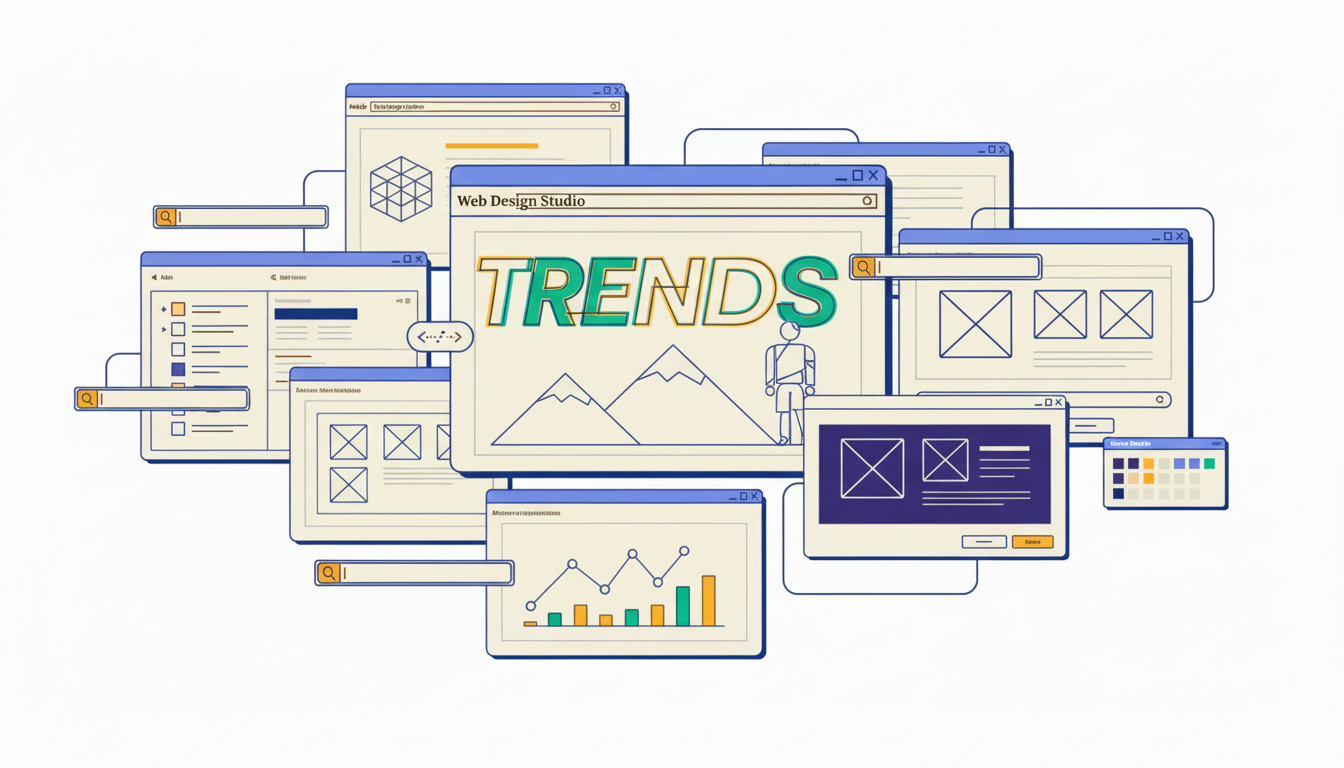

Denisa Lamaj
Created on Sep 25, 2025
Web design doesn’t stand still. What looked modern a couple of years ago can feel outdated today as trends shift with culture, technology, and user expectations.
For designers, developers, and businesses, keeping up it’s about staying relevant. A modern, intuitive website builds trust, improves usability, and gives you an edge.
In 2025, AI-driven creativity, smarter tools, and new aesthetics are reshaping how websites balance function and emotion.
In this guide, I’ll walk you through 14 web design trends defining the year and how to apply them to your next project.
1. Immersive 3D experiences
Instead of static images, websites are bringing products and ideas to life with interactive models, animations, and environments that users can explore. This creates a sense of depth and engagement that flat design elements simply can’t match.
We’re already seeing this trend in action. Apple uses 3D product showcases to let visitors spin and zoom in on devices as if they were holding them.
IKEA takes it further with AR and 3D previews, allowing customers to see how a sofa or table looks in their own space before making a purchase.
Here’s an example of how IKEA shows a table inside a real room. This kind of preview reduces uncertainty, helps users make confident decisions, and turns browsing into a more immersive experience.
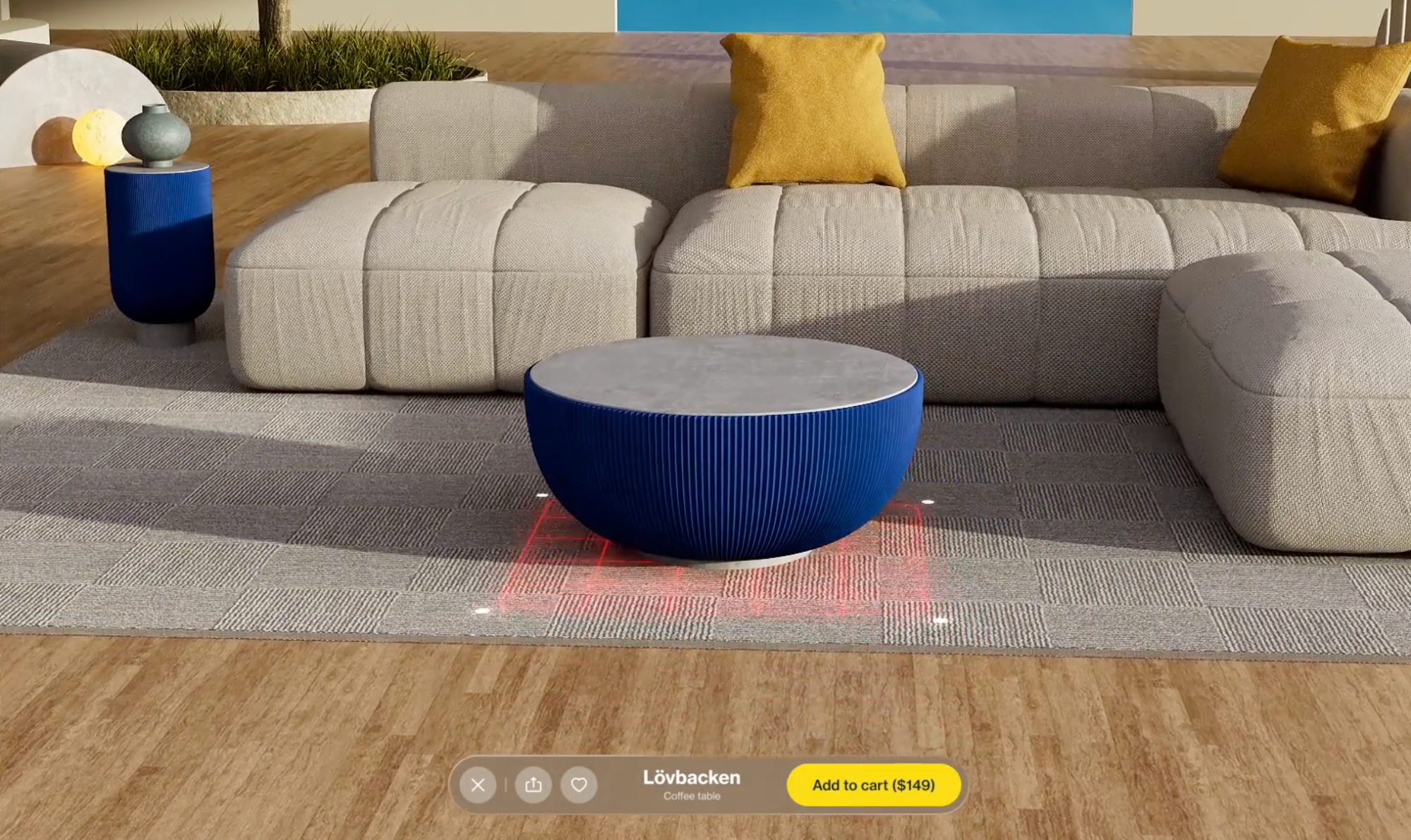
That said, 3D should never come at the cost of performance. Heavy graphics can slow down load times, which frustrates visitors and harms SEO.
The goal is to use 3D strategically, to highlight key features, make navigation more intuitive, or add a layer of realism to the brand experience.
When done right, it can turn a website into an interactive journey rather than just a page to scroll through.
2. AI-driven personalization
AI is changing how websites adapt to individual users. Rather than giving everyone the same experience, sites now use data and artificial intelligence to adjust content, layouts, and interactions in real time. The result is a journey that feels more relevant and engaging.
Netflix is one of the clearest examples. The platform curates movie and series suggestions based on your viewing history, so no two home screens look alike.
Here’s what that looks like: Netflix highlights titles you’re most likely to watch next, cutting down decision fatigue and keeping users engaged.
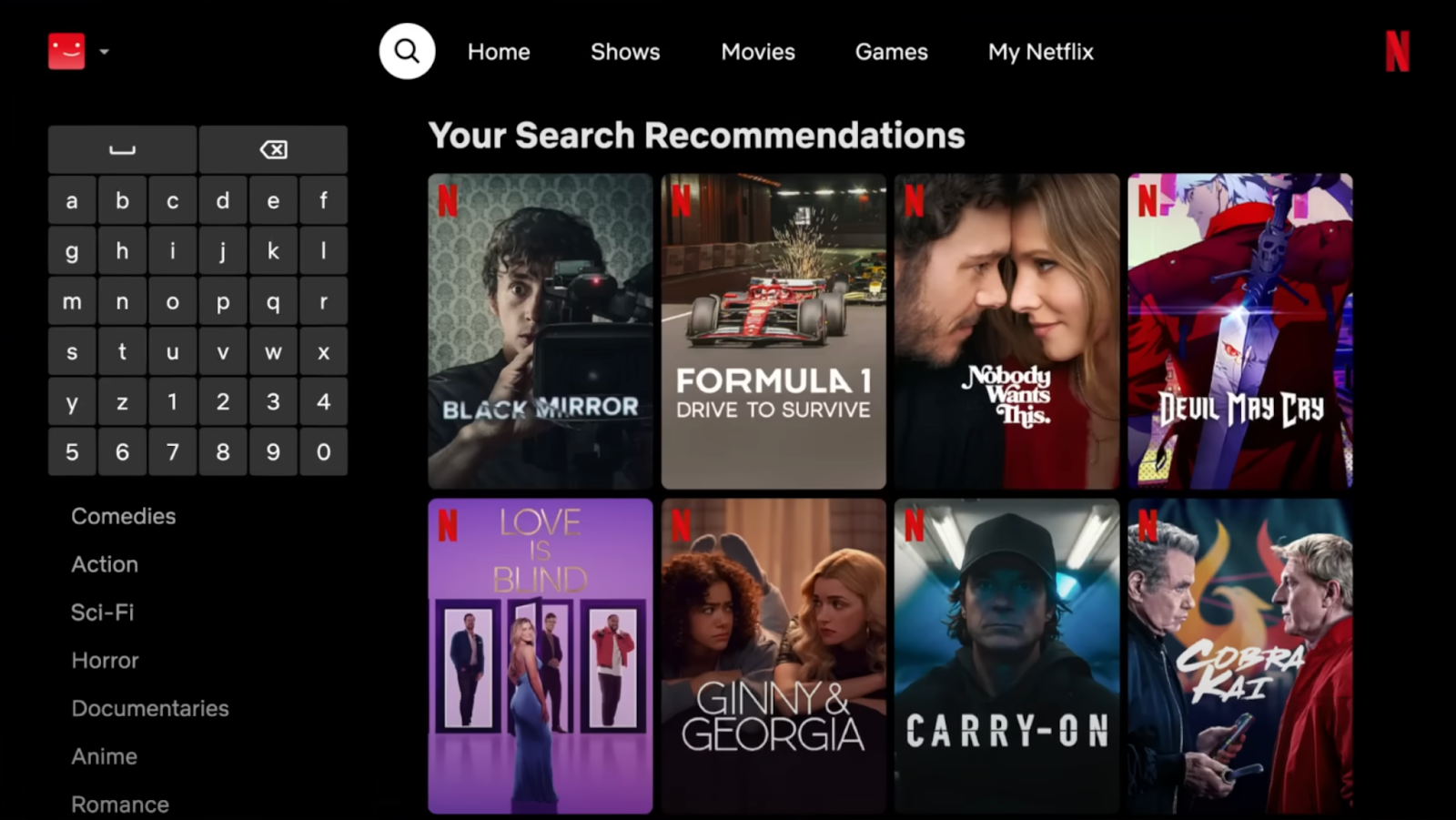
Amazon applies the same idea by tailoring product recommendations to browsing and purchase behavior.
Personalized sections like “More top picks for you” or “Deals related to items you’ve saved” keep users coming back and reduce the time spent searching.
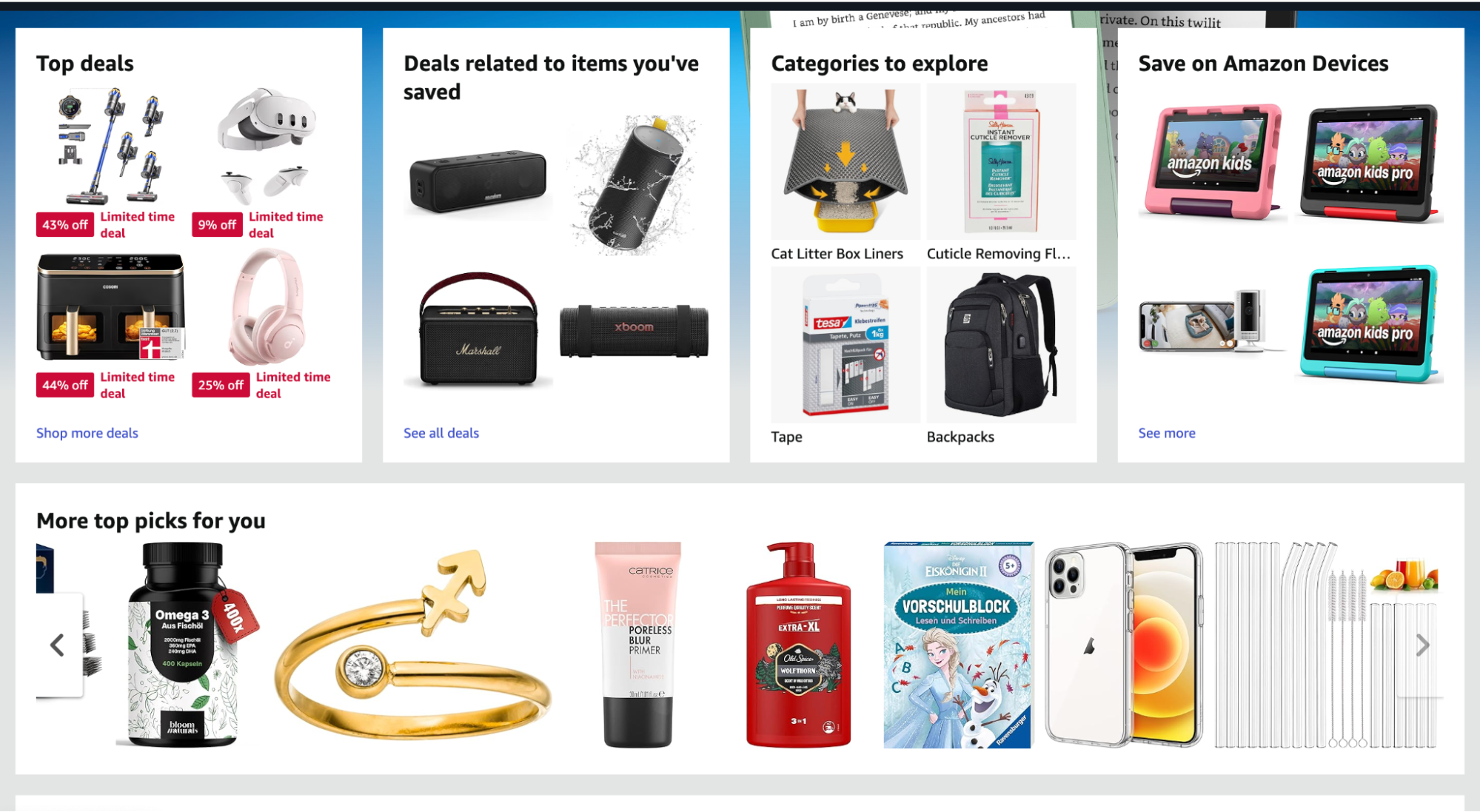
On a broader level, AI-driven personalization includes features like chatbots that respond instantly to customer needs, dynamic content blocks that shift with user intent, and adaptive layouts that prioritize the most relevant information.
For businesses, the benefits are clear: stronger engagement, higher conversion rates, and more loyal customers.
The key is balance—personalization should guide users without overwhelming them or feeling intrusive.
3. Dark mode and low-light UX
Dark mode has shifted from a “nice-to-have” to a standard option across major platforms. People choose it not only for the sleek aesthetic but also because it makes browsing more comfortable in low-light environments.
The benefits go beyond looks. A darker interface can reduce eye strain during long sessions and even extend battery life on OLED screens.
That’s why platforms like YouTube and X (formerly Twitter) have made dark mode a default feature you can toggle instantly.
Here’s how it looks on YouTube. You can switch between light, dark, or system themes directly from the settings panel.
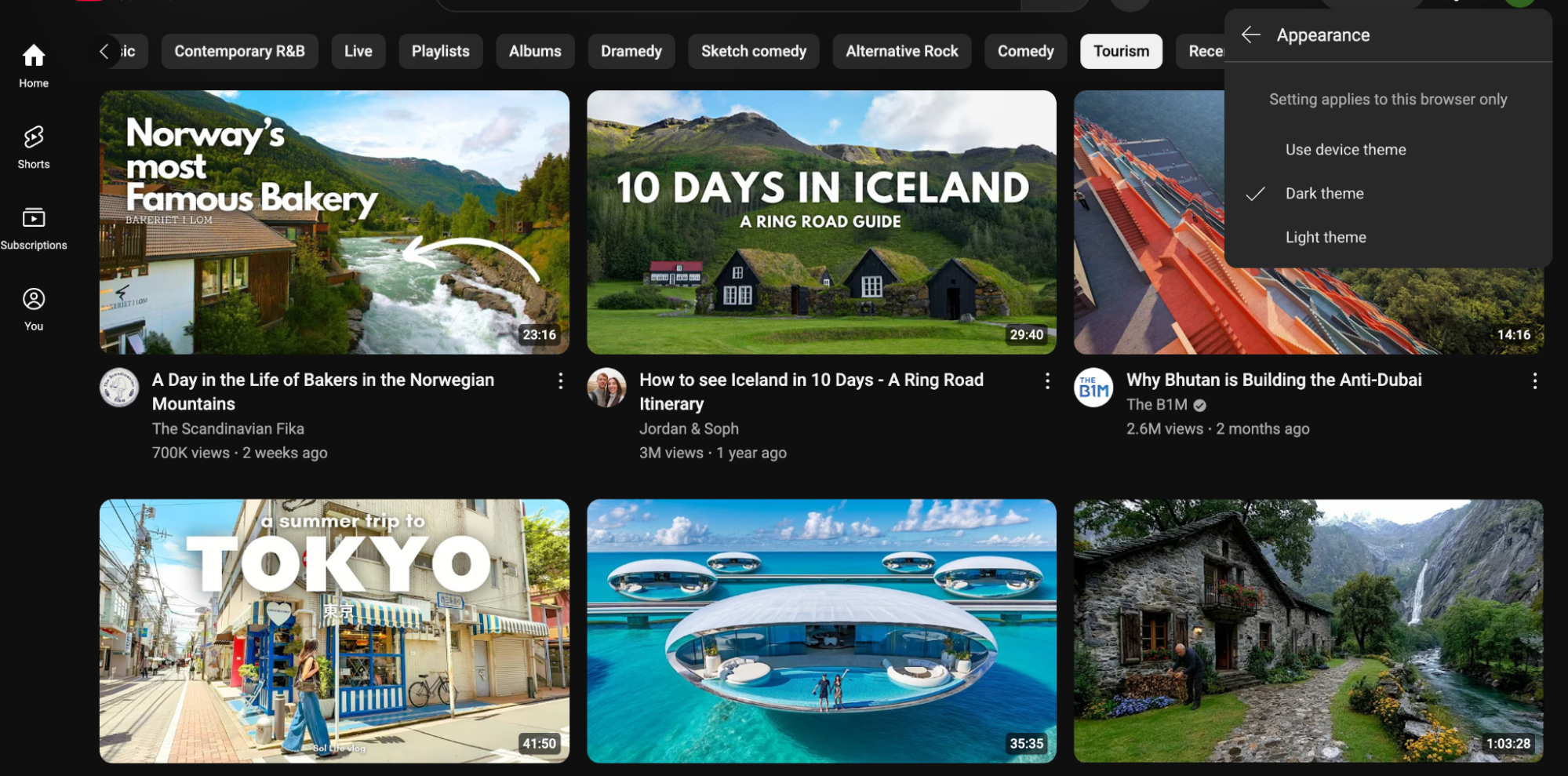
On X, you can take it further with options like “Dim” and “Lights Out.” You can also personalize the interface by changing highlight colors to blue, yellow, purple, or other shades.
This flexibility makes the dark mode experience feel tailored to your preferences rather than just a one-size-fits-all setting.
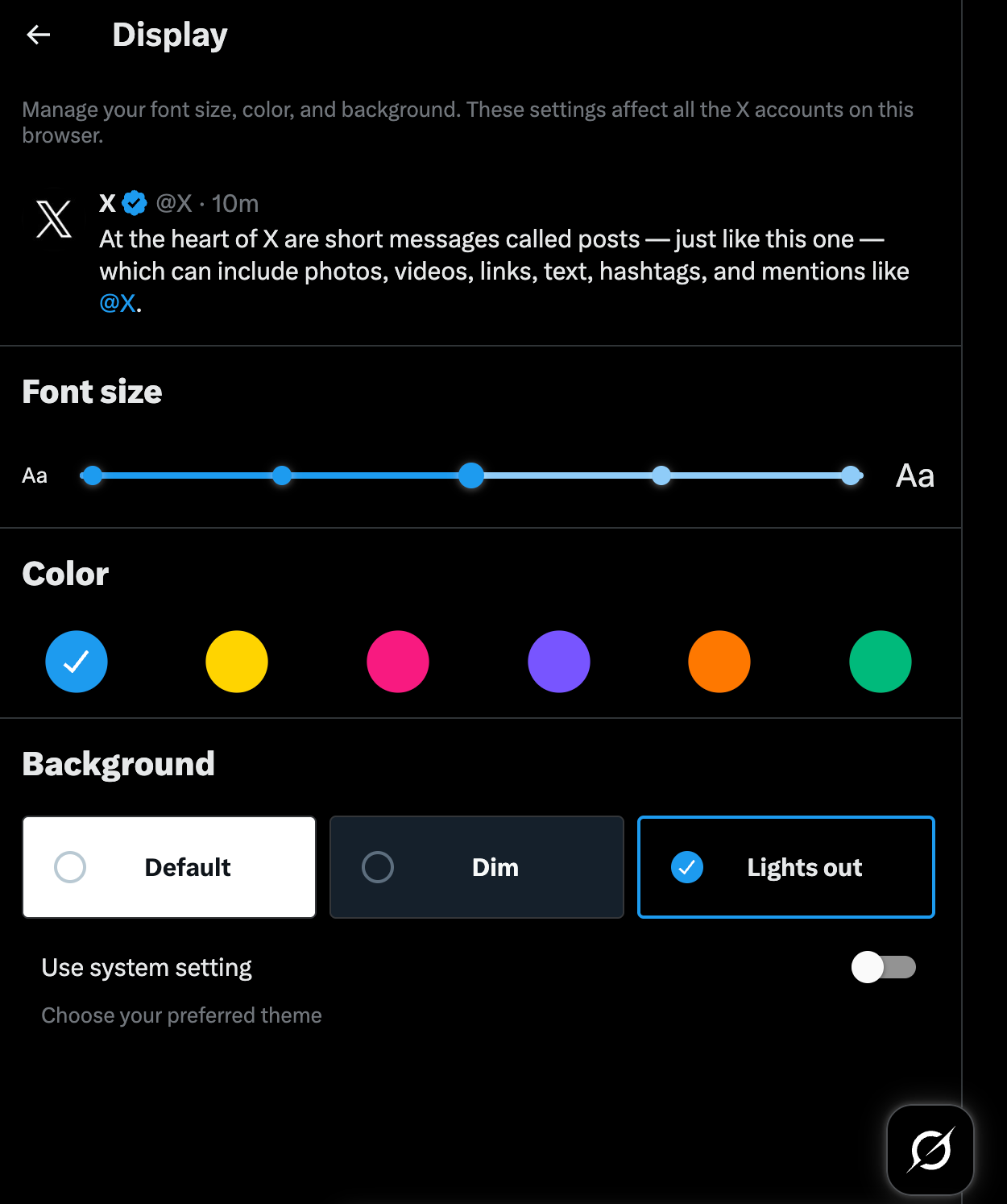
For designers, the challenge is making sure dark mode isn’t just inverted colors. It requires thoughtful contrast, accessible typography, and consistent branding.
When executed well, low-light UX delivers a smoother, more enjoyable experience, one you increasingly expect by default.
4. Minimalism and maximalism
Web design is embracing two very different (but equally powerful) approaches: minimalism and maximalism. They sit at opposite ends of the spectrum, but both can deliver strong results when used in the right context.
Minimalism is all about clarity.
Clean layouts, generous whitespace, and simple typography let the content or product speak for itself. Apple’s Mac product page is a great example.
Notice how the design feels spacious and distraction-free, while the bold product imagery takes center stage.
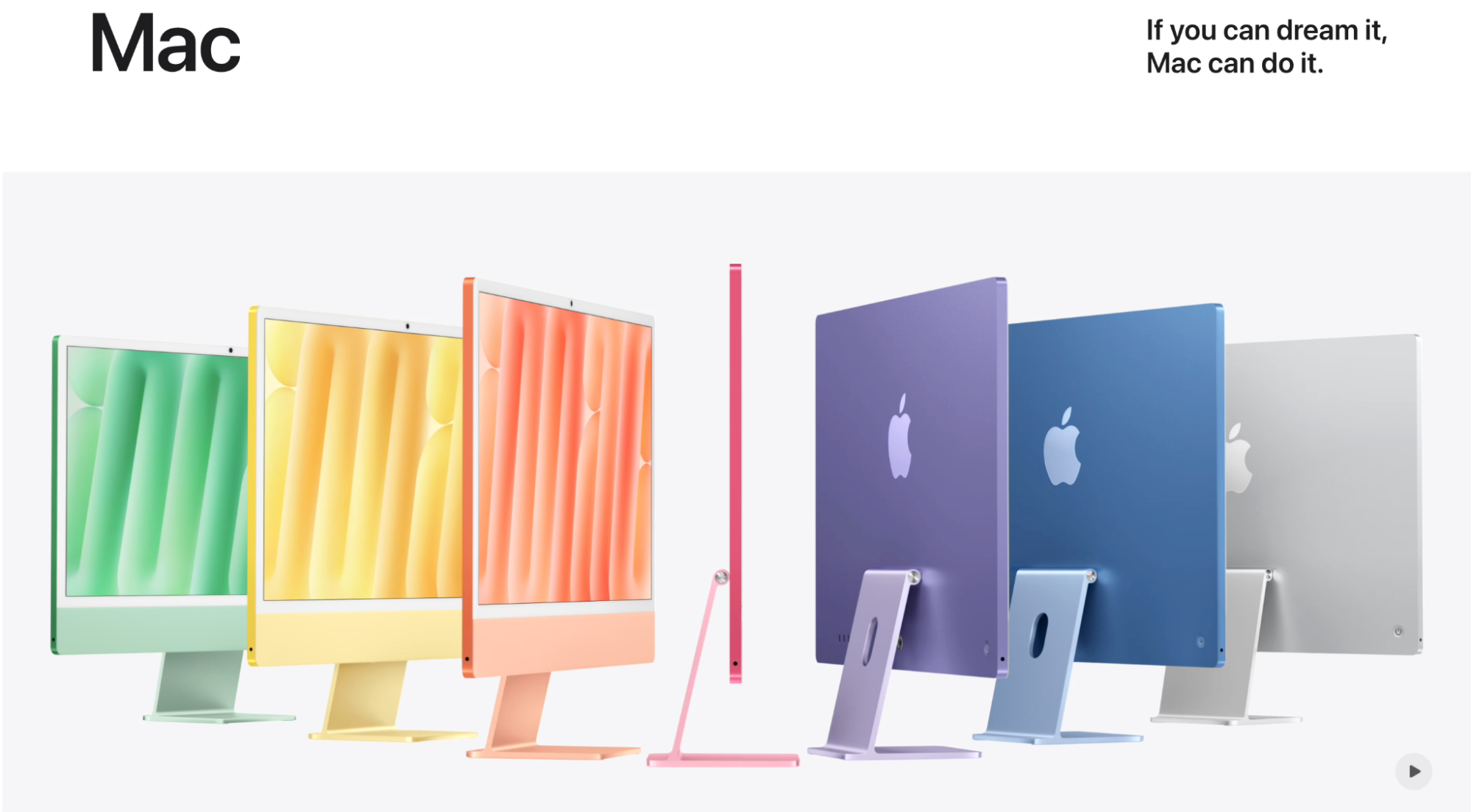
Maximalism, on the other hand, thrives on boldness. It uses rich colors, layered visuals, and expressive layouts to grab attention instantly.
Gucci’s campaign pages show how maximalist design can feel like an experience in itself: playful, dramatic, and full of personality.
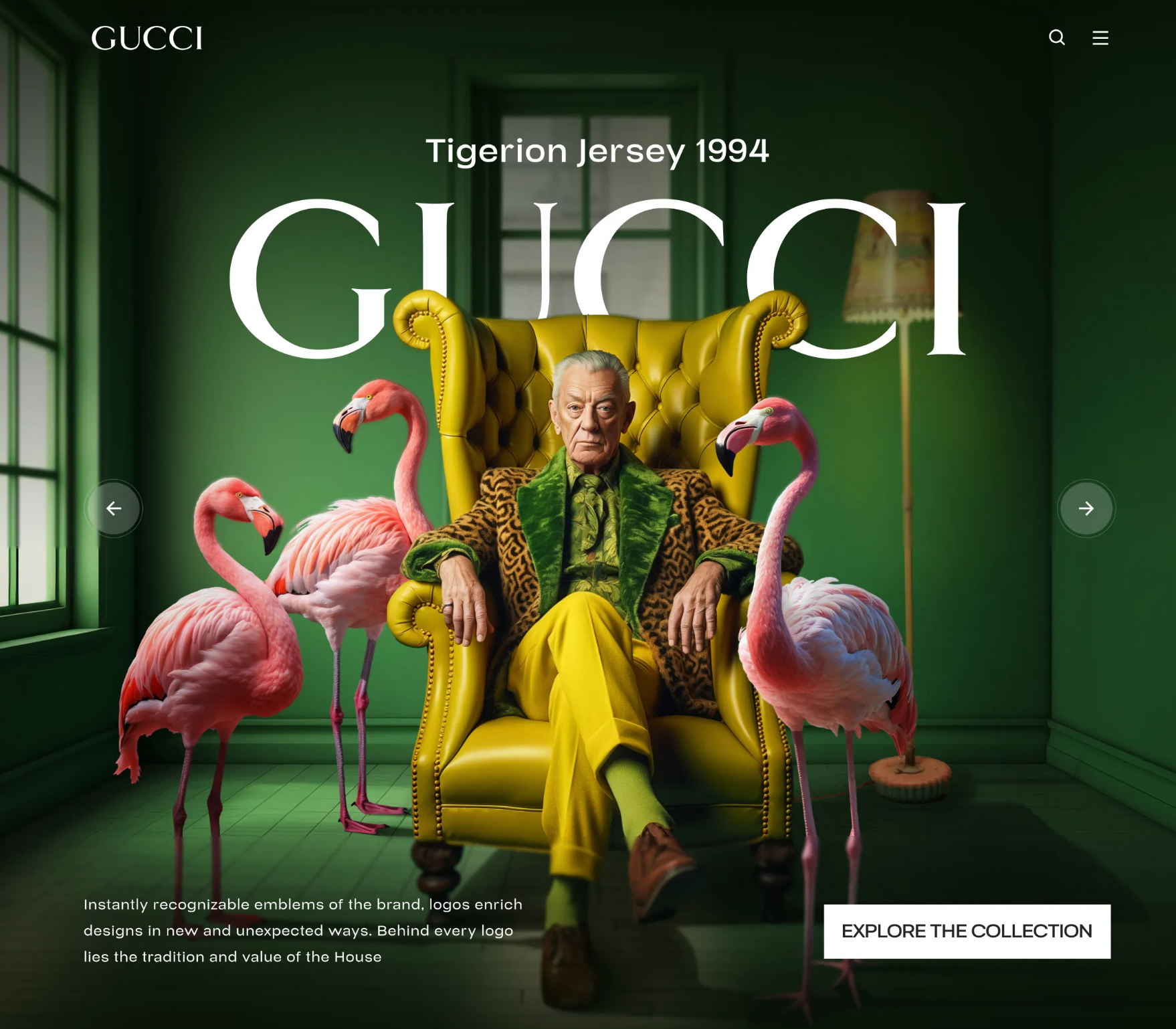
The key is knowing when to use each approach:
-
Minimalism works best when clarity, sophistication, and usability are the goals.
-
Maximalism is suited to industries where emotion, storytelling, and brand personality drive engagement.
Both highlight the flexibility designers now have to adapt style to audience needs and brand identity.
5. Micro-interactions and animations
Sometimes the smallest details make the biggest difference in user experience.
Micro-interactions like hover effects on buttons, smooth scrolling transitions, or subtle loading cues—guide attention, provide feedback, and make interfaces feel more alive.
You see these every day. On LinkedIn, reactions animate when you press and hold, giving an instant emotional response.
Instagram’s heart “pops” when you double-tap a photo, turning a simple gesture into something memorable. These touches add delight without requiring users to think about them.
Designers are also pushing creativity with effects like the ripple animation below. In this Webflow demo, every click triggers ripples across the screen, creating depth and movement without sacrificing performance.
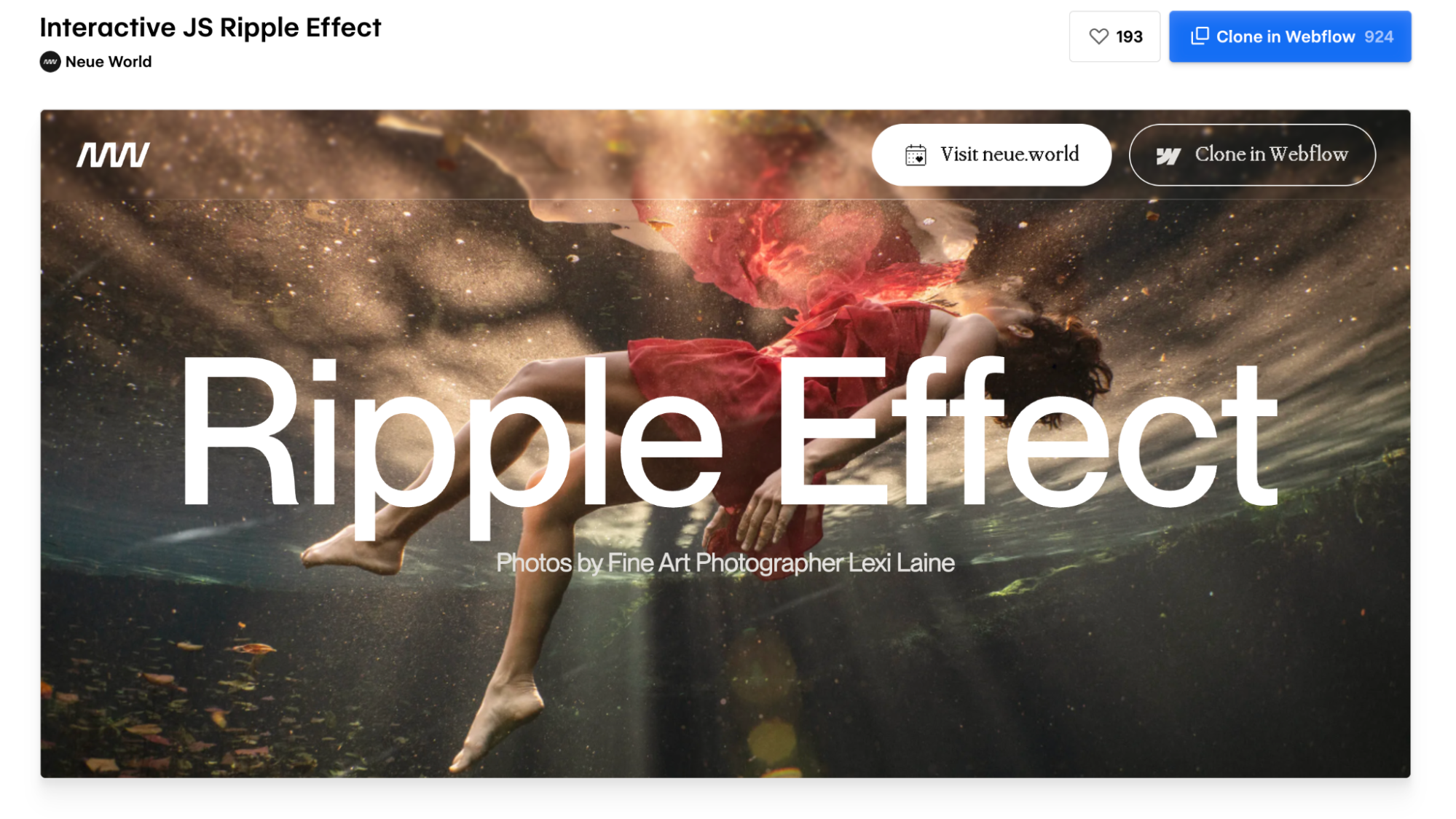
Micro-interactions should support usability and storytelling, not distract from them. When used thoughtfully, these small details transform ordinary interactions into polished, human moments that stick with the user.
6. Parallax and non-traditional scrolling
Scrolling is no longer just a way to move down a page—it’s becoming part of the storytelling itself.
Parallax effects, where background and foreground elements move at different speeds, create a layered sense of depth that makes browsing more immersive. This approach helps designers transform static content into dynamic narratives.
A clear example is Spotify Wrapped.
Each scroll reveals new visuals, stats, and animations in sequence, pulling you deeper into the story of your listening habits.
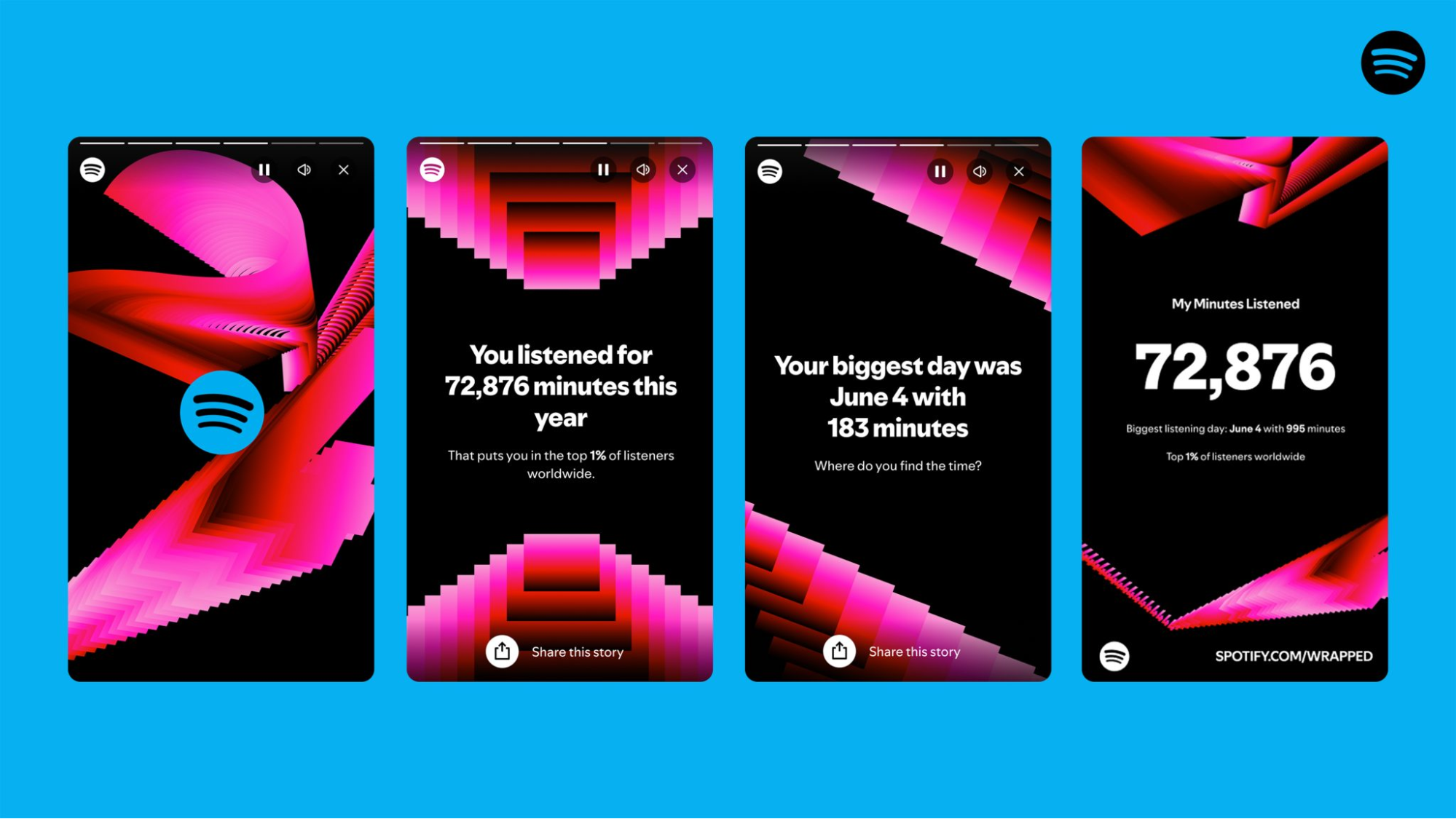
Apple’s product launch pages use a similar method, each scroll step unlocks animations and product details in a cinematic flow
Beyond parallax, designers are experimenting with horizontal and infinite scrolling to make experiences feel more modern and interactive.
But these patterns require careful planning: used too heavily, they can confuse users.
Scrolling effects should guide and engage—not overwhelm. When done well, they turn a simple webpage into an interactive journey that keeps visitors curious about what’s next.
7. Bold typography and kinetic text
Typography is stepping into the spotlight in 2025. Oversized headlines, expressive fonts, and animated type are no longer secondary elements—they’re becoming the foundation of modern web design.
The reason is simple: text communicates faster than images.
A bold headline or unexpected font pairing instantly conveys personality, mood, and brand voice before the user reads another word.
The New York Times shows how typography can guide attention in long-form features. Large titles paired with elegant typefaces make complex stories approachable and engaging, ensuring readers don’t feel overwhelmed by heavy content.
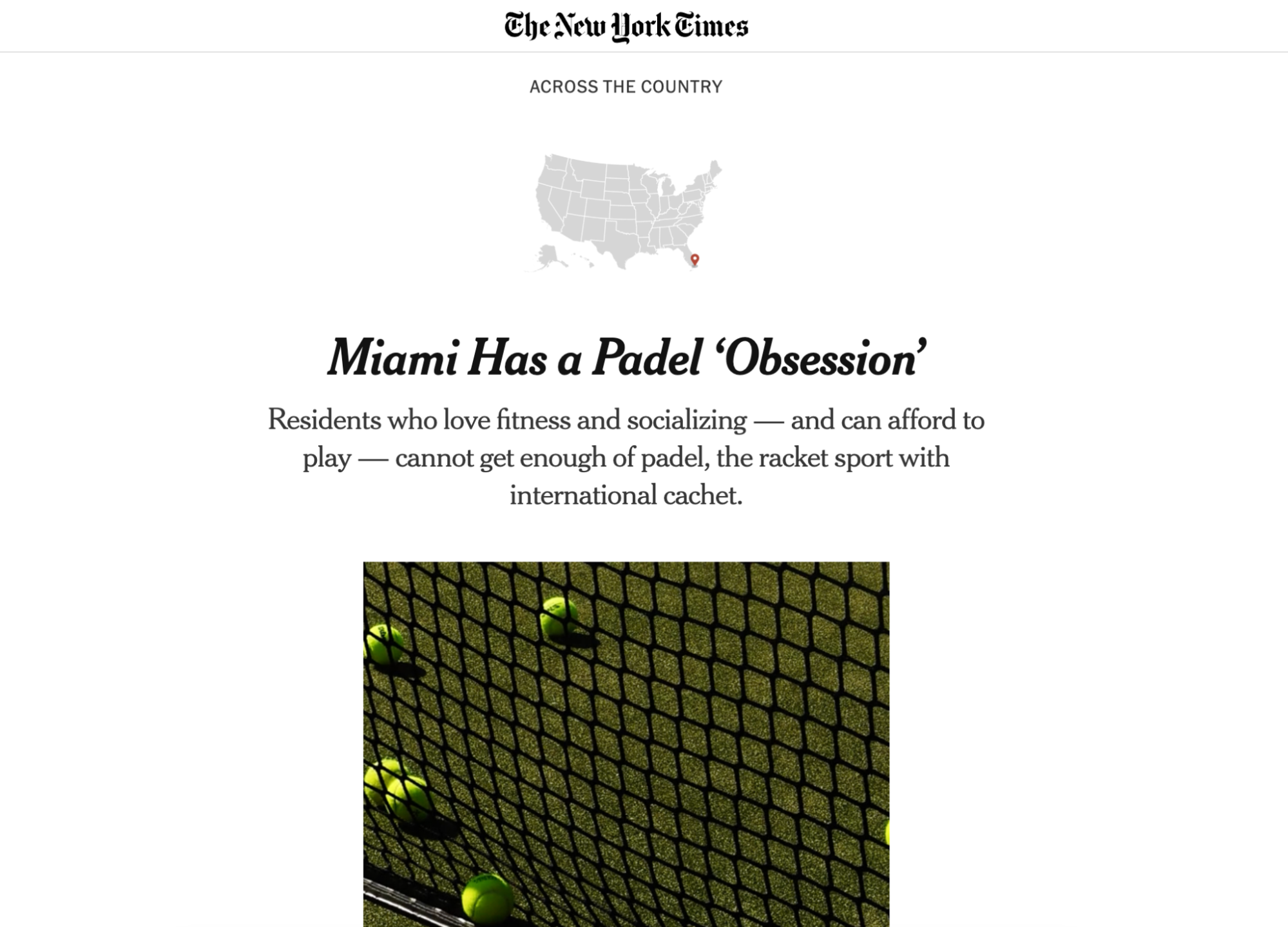
On the other side, Typewolf highlights how different font combinations can completely change the feel of a page.
A sleek sans-serif paired with a traditional serif communicates something very different from two playful, rounded fonts.
Designers use this to shape identity and keep layouts visually distinctive—even when the rest of the design is minimal.
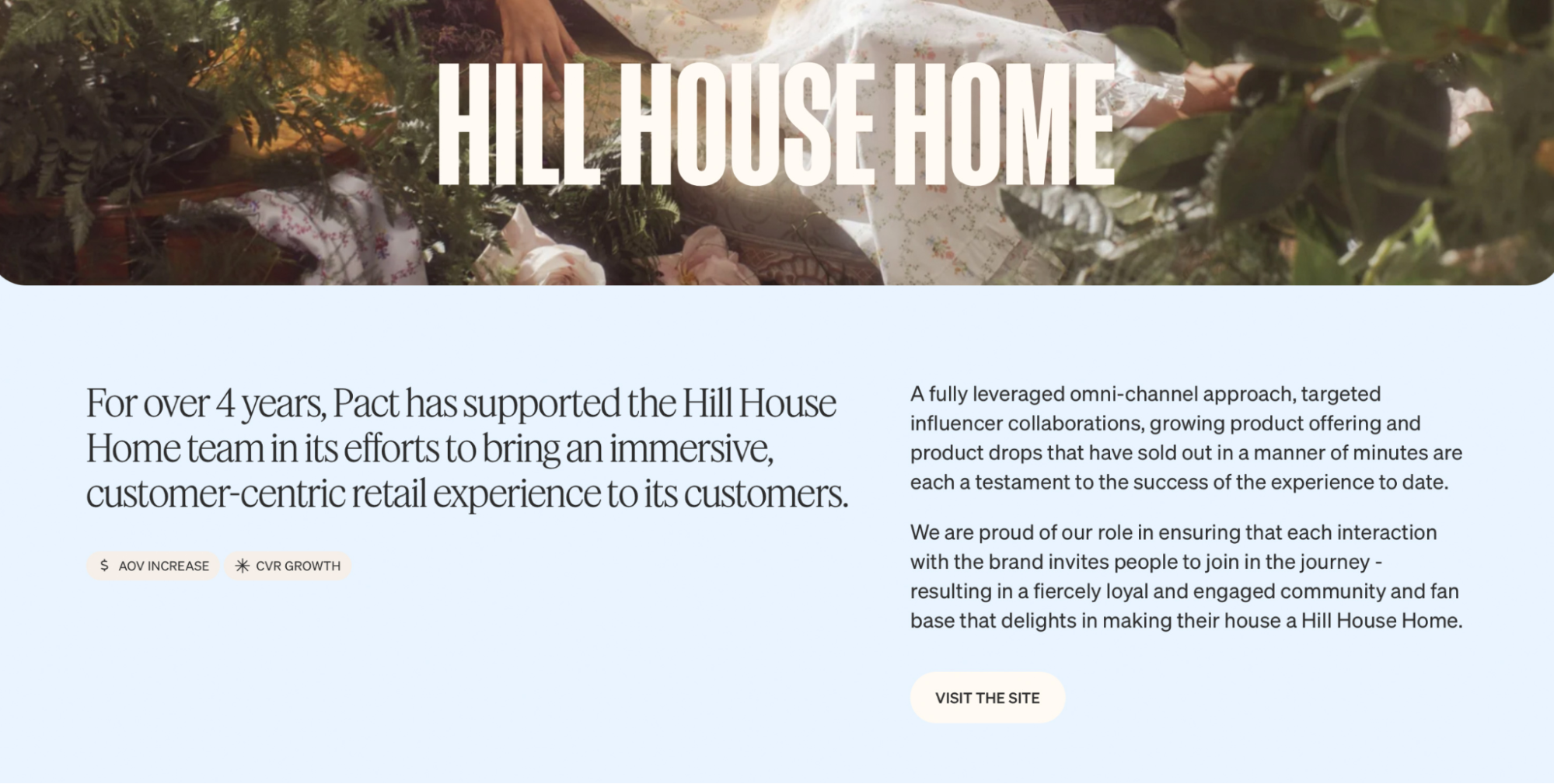
Kinetic text pushes this further by animating words as users scroll or interact. Letters might stretch, rotate, or fade in sync with movement on the page.
This makes reading more dynamic, almost cinematic, and helps emphasize key messages. You’ll see it used in campaigns and creative portfolios where storytelling is as important as information.
The challenge, of course, is not to overdo it. Unique fonts or fast-moving animations can quickly make text hard to read.
The most successful examples balance creativity with legibility, ensuring words remain clear while still delivering impact.
8. Retro and nostalgia-driven design
What’s old is new again. Retro styles inspired by the early web (think 90s aesthetics, pixel art, and playful UI patterns) are making a strong comeback in modern web design.
These layouts embrace bold colors, chunky fonts, and quirky shapes that echo the experimental feel of early internet pages while updating them for today’s standards.
They bring personality and warmth in a way that polished minimalism sometimes can’t.
Here’s an example: a furniture site that leans into retro energy with pastel backgrounds, bold reds and yellows, and rounded illustrations that feel straight out of a mid-century catalog.
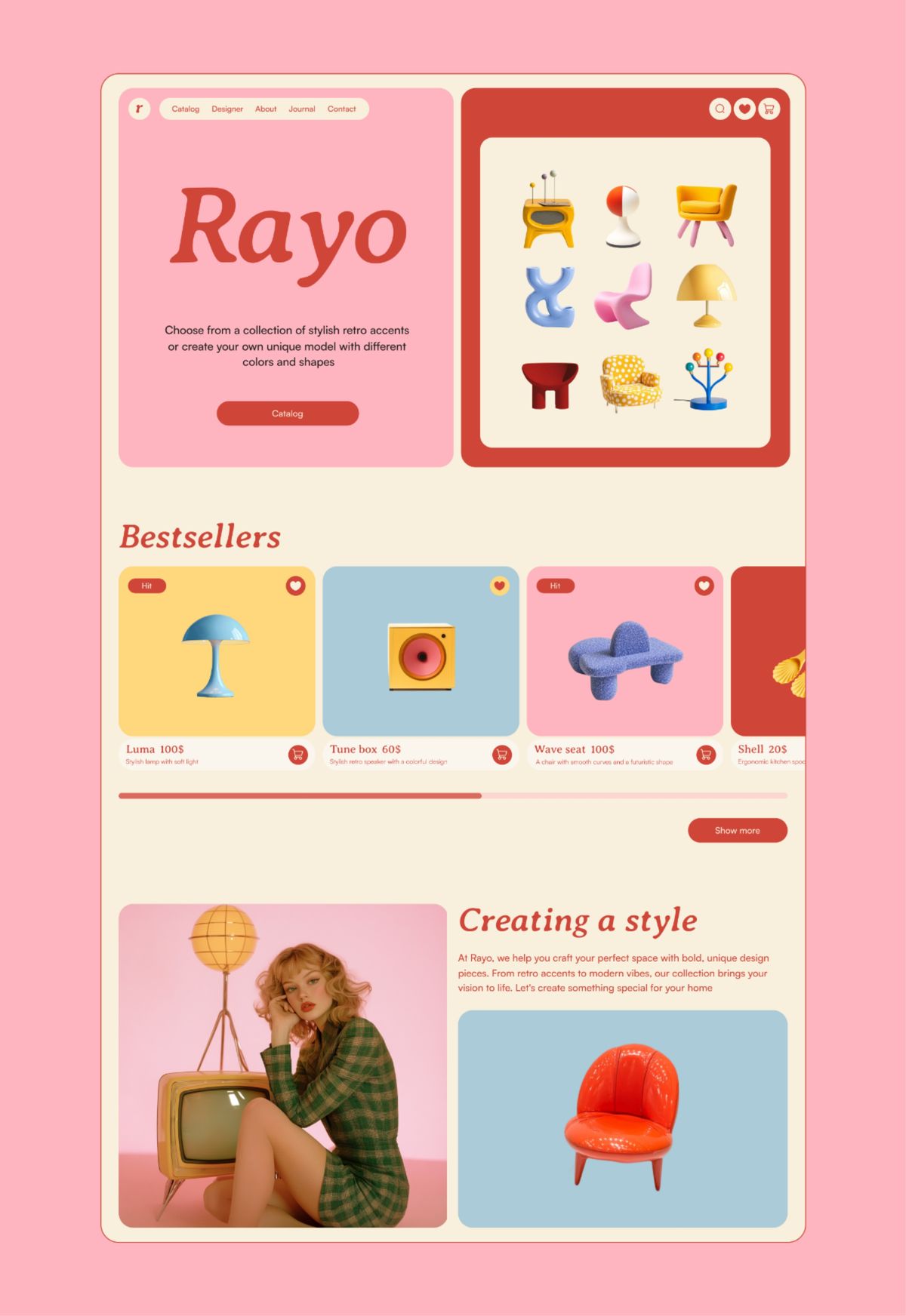
Combined with playful typography and vintage product styling, the design instantly captures a sense of nostalgia while staying clean and easy to browse.
This approach resonates especially with Gen Z and Millennials, who connect with retro aesthetics through both childhood memories and pop culture revivals.
For brands, retro-inspired design is a way to stand out in a crowded digital landscape by offering something familiar yet fresh.
The challenge is to use nostalgia strategically, blending it with modern usability so the site feels fun without sacrificing clarity.
9. Abstract and conceptual aesthetics
Not every website is built to mirror reality. In recent years, designers have leaned into abstract shapes, surreal imagery, and conceptual graphics to create experiences that feel more like art installations than traditional web pages.
This approach immediately signals originality and sets a brand apart from competitors using safer, conventional layouts.
To support this shift, many now turn to AI tools that generate original visuals from written prompts, often relying on text to image AI as part of their workflow.
Active Theory is a clear example of this style. Their homepage combines a dark, futuristic interface with glitch-inspired transitions and kinetic typography.
As you scroll, the visuals shift and react in real time, blurring the line between browsing and storytelling.
The effect is both immersive and memorable, something you’d expect from a digital studio positioning itself at the cutting edge of design.
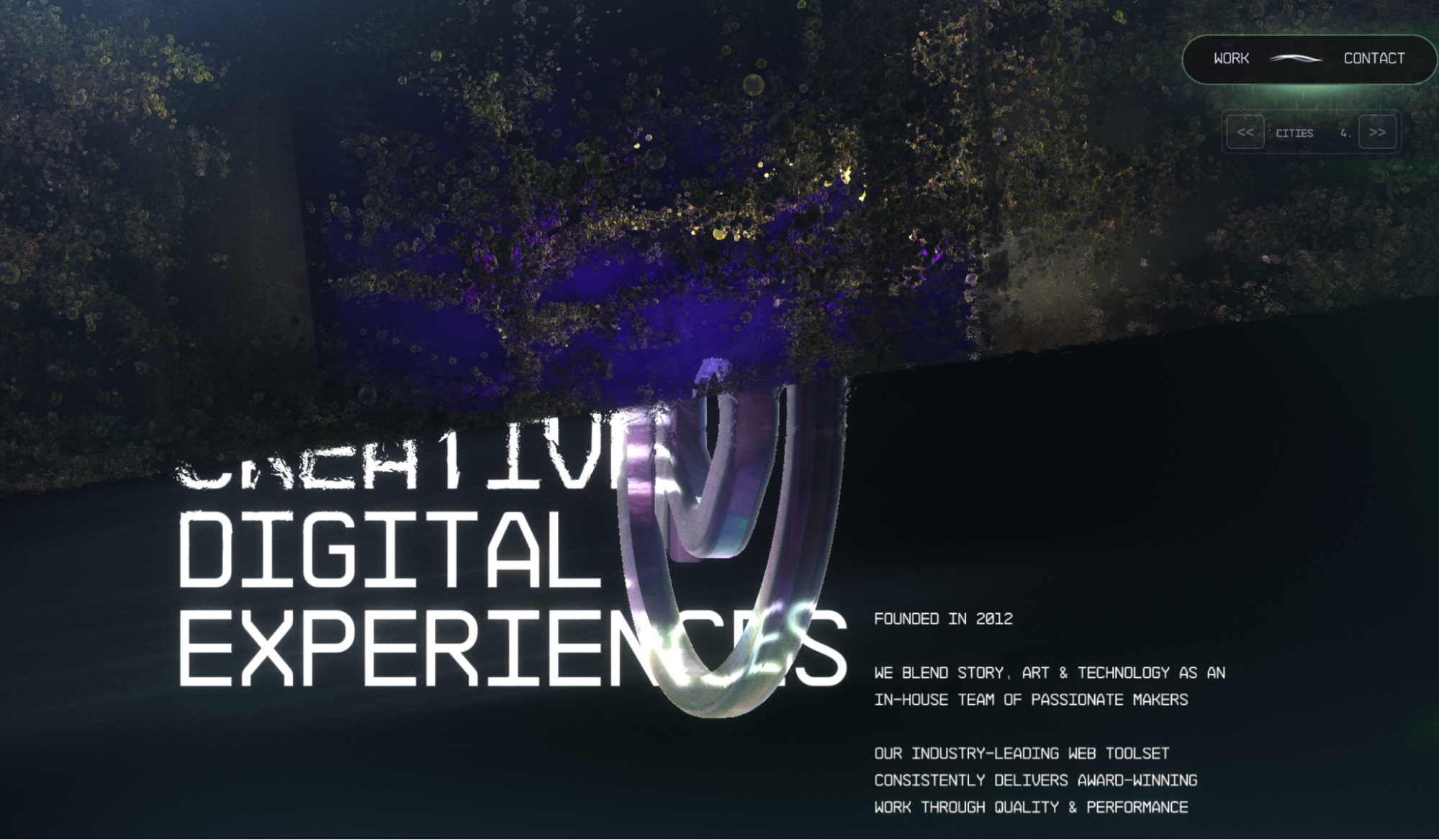
Abstract aesthetics are especially effective in industries like fashion, art, and creative portfolios, where the brand itself is built on experimentation. These visuals can spark curiosity, capture attention instantly, and leave a lasting impression.
The challenge is to balance creativity with usability. Without clear navigation or logical flow, abstraction can quickly turn into confusion.
The best executions pair bold visual experimentation with intuitive design, so visitors feel intrigued but never disoriented.
When done right, conceptual aesthetics transform a website from a static destination into a living, interactive experience that invites exploration and reinforces brand identity.
10. Experimental navigation
A growing number of websites are replacing traditional menu bars with navigation that becomes part of the experience itself.
Some trends include:
-
Hidden menus that appear only when you click or hover, creating a cleaner initial screen.
-
Playful cursors that morph or trail when you move your mouse.
-
Interactive hotspots—small, animated areas that guide users through a page in a non-linear way.
Take Truus, for example.
Their site greets you with a bold, asymmetrical, pastel-toned layout that feels dynamic and youthful—exactly right for a forward-thinking agency targeting a new mainstream.
As you scroll, the bold message “we wanna be where the people are” unfolds across the screen. The text itself works like a guide, pulling you deeper into the site without relying on a standard menu bar.
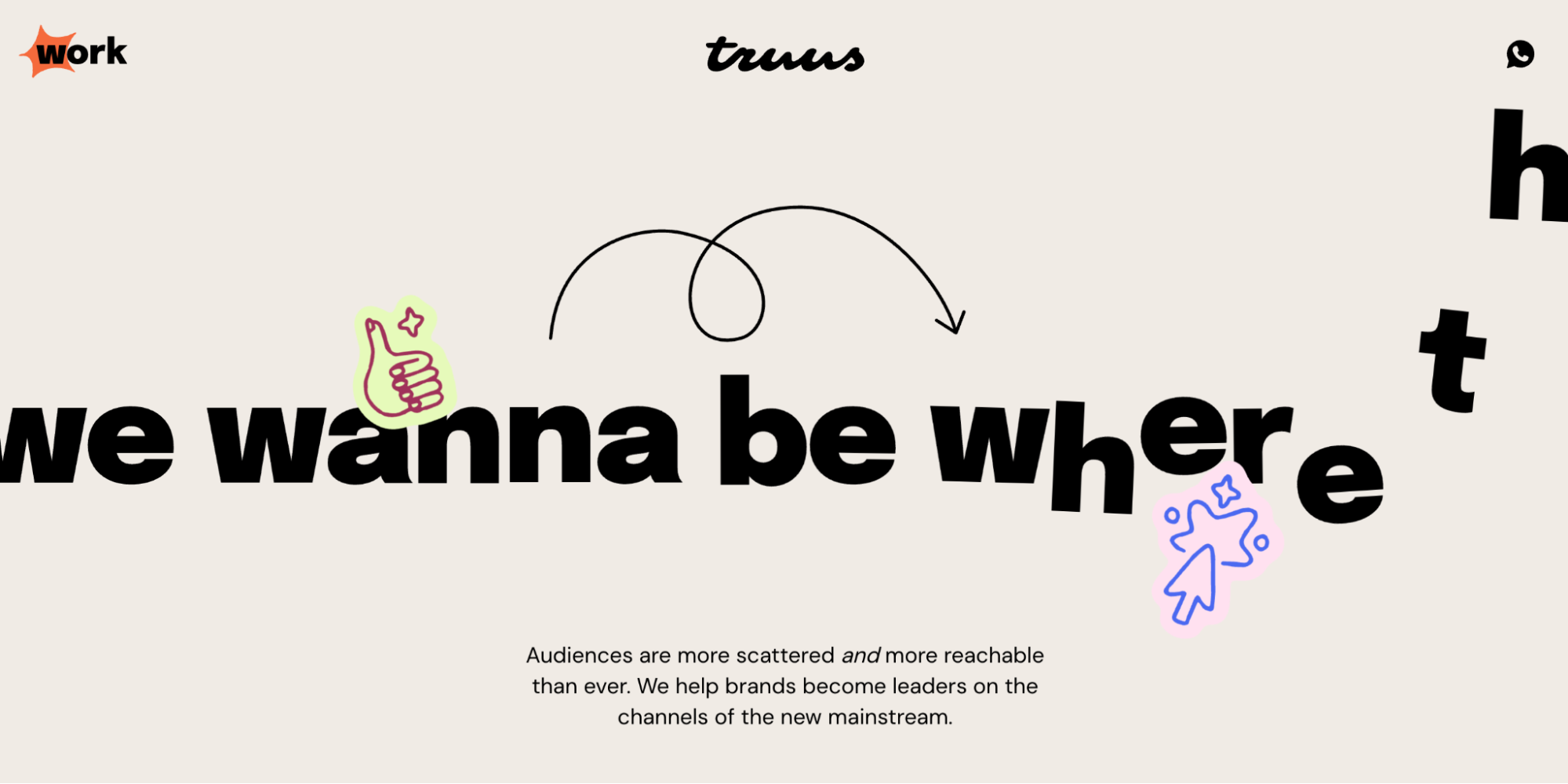
Other experimental approaches include hidden menus that reveal themselves only when clicked, playful cursors that react to movement, or interactive hotspots that guide users through non-linear journeys.
These designs make navigation an active experience rather than a background utility.
That said, creativity should never come at the cost of clarity. If visitors struggle to find their way around, the effect quickly backfires.
The strongest examples strike a middle ground—navigation that feels fresh and engaging, but still keeps the path intuitive.
11. Custom illustrations and blended graphics
Stock photos are becoming less effective as brands look for more personal ways to connect with audiences.
Custom illustrations have stepped in to fill that gap, giving websites a distinct voice that feels approachable and memorable.
Slack shows how powerful this can be. Its product interface often features light, hand-drawn illustrations with soft colors and simple shapes.
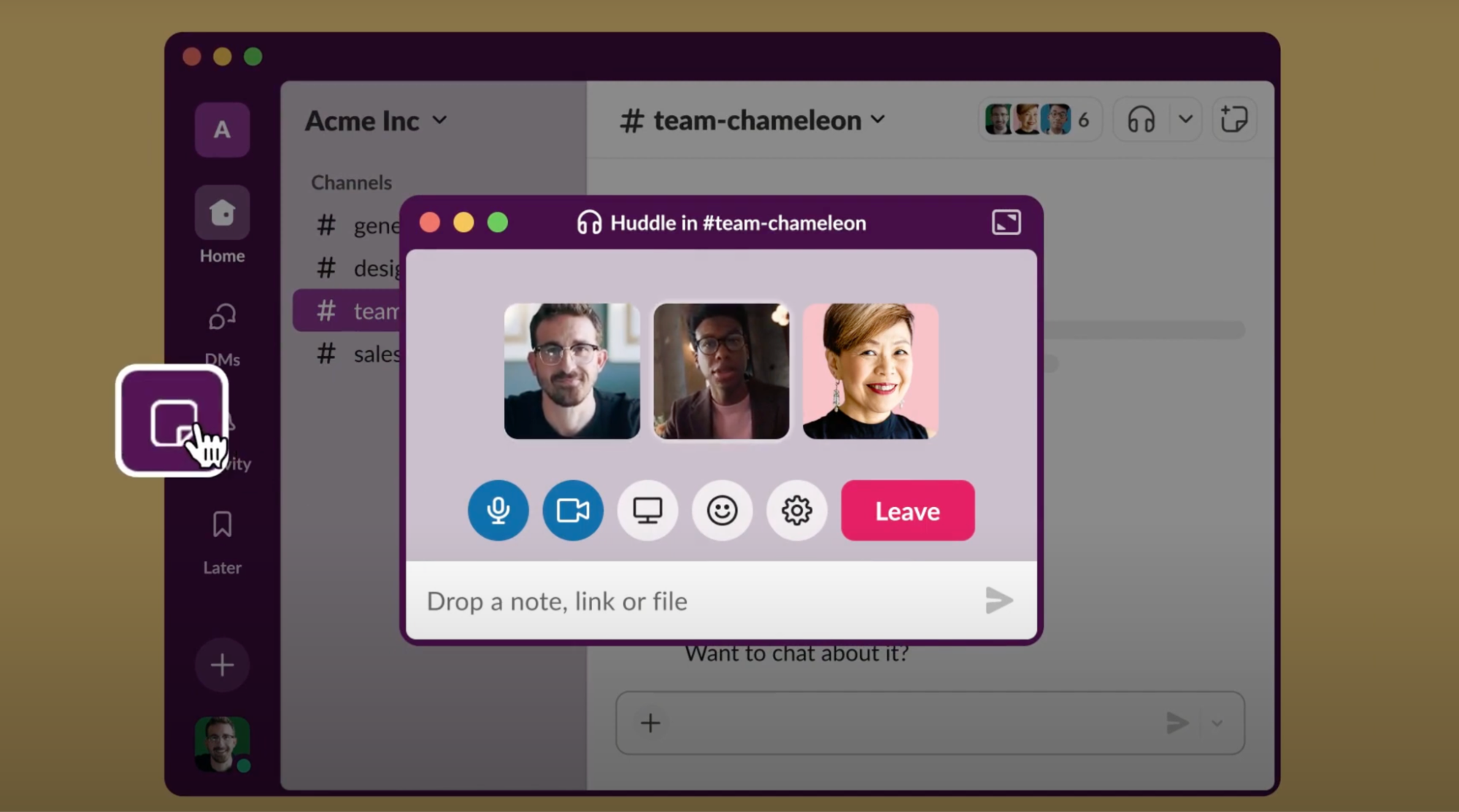
These visuals add warmth to a tool that could otherwise feel technical and dry, making collaboration seem friendlier and less intimidating.
Mailchimp takes a different route.
Its bold, character-driven artwork has become a defining part of its identity. Instead of using subtle accents, Mailchimp embraces playful, sometimes surreal illustrations that immediately grab attention.
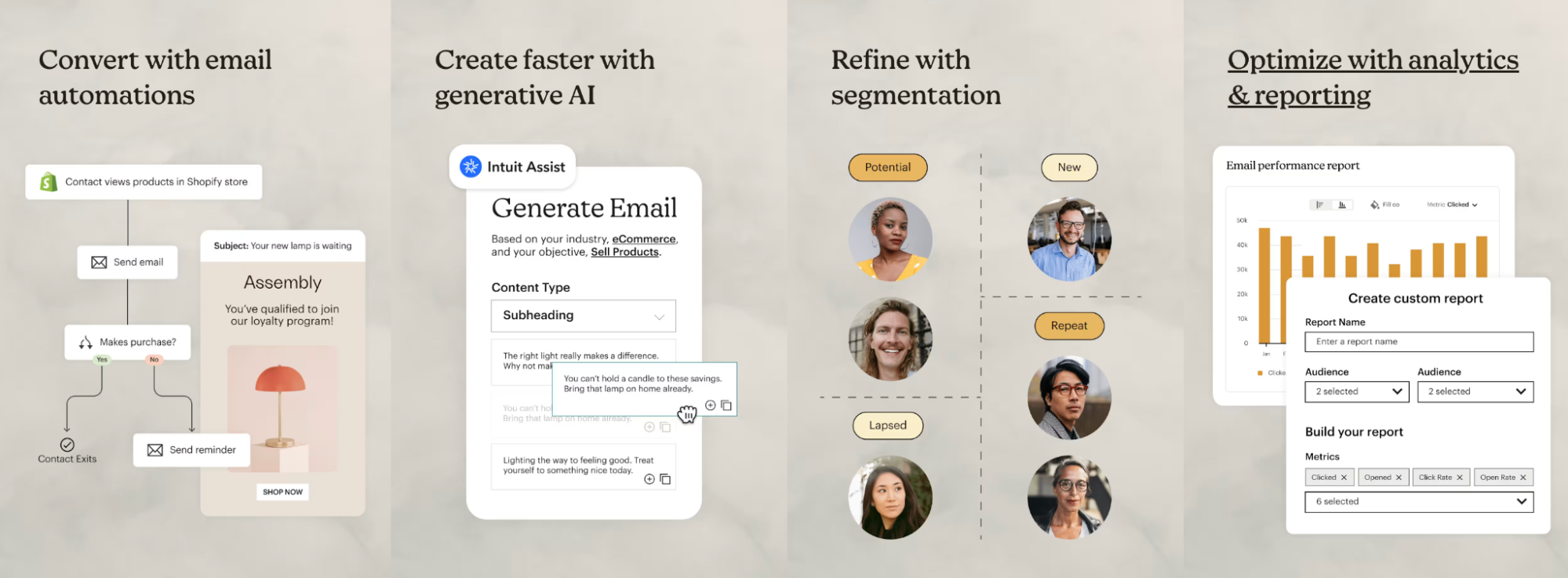
This creative style reinforces the brand’s reputation as innovative and approachable, while ensuring the site feels unmistakably “Mailchimp.”
Another design direction gaining traction is blending photography with illustrations or graphic textures. For example, real images might be layered with geometric shapes, hand-drawn doodles, or bold color blocks.
This hybrid look makes photos feel less staged than typical stock visuals and gives designers freedom to highlight key elements without relying solely on text.
Platforms like Behance are filled with creative explorations of this style.
Custom and blended graphics do more than add decoration—they set the tone for how a brand is perceived.
When done well, they can make a website feel both authentic and visually distinctive, helping users connect emotionally before they even start reading.
12. Gamified experiences
Web design is borrowing more and more from the world of games to keep users motivated and engaged.
Progress bars, streaks, badges, and mini-challenges turn ordinary actions into achievements, making the experience feel rewarding rather than routine.
One of the clearest examples comes from Duolingo. Its colorful animations, streak counters, and XP rewards transform learning into a game.
Every lesson ends with a celebratory screen that shows progress in real time. Users can see their stats, claim points, and instantly feel accomplished.
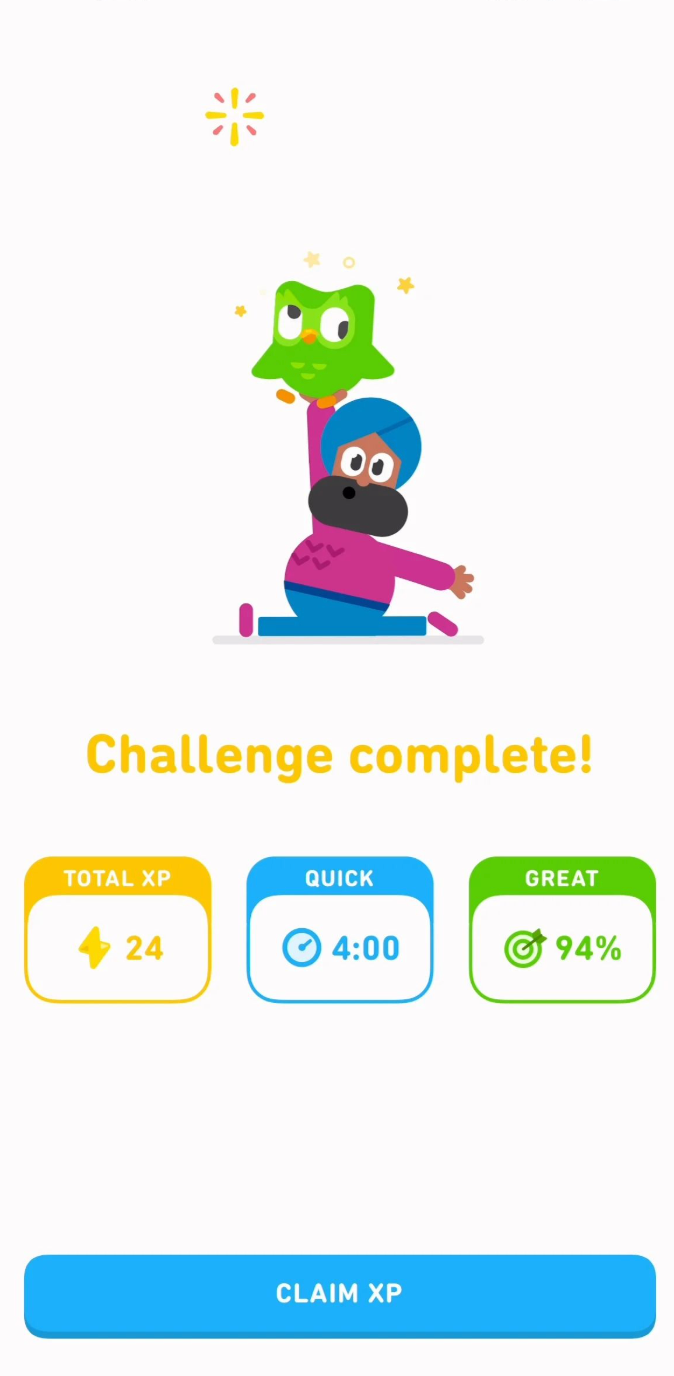
This approach works because it taps into psychology: when people feel rewarded for small steps, they’re more likely to return and build habits around the product.
Other industries use similar strategies, from fitness apps that hand out virtual trophies to productivity platforms that celebrate completed tasks.
Gamification is most effective when it supports the user’s goals instead of distracting from them. Done well, it turns a functional experience into something playful, memorable, and habit-forming—one small win at a time.
13. Text-only hero sections
Not every website needs a big image or video at the top. More designs are embracing text-only hero sections, where oversized typography and carefully chosen colors carry the entire message.
This style works because it forces clarity—there’s nothing to hide behind. A single sentence in bold type can instantly communicate vision or personality, making the words themselves the design.
Here’s an example: one site uses huge, block-style letters stretched across the hero area, creating a playful and confident first impression.
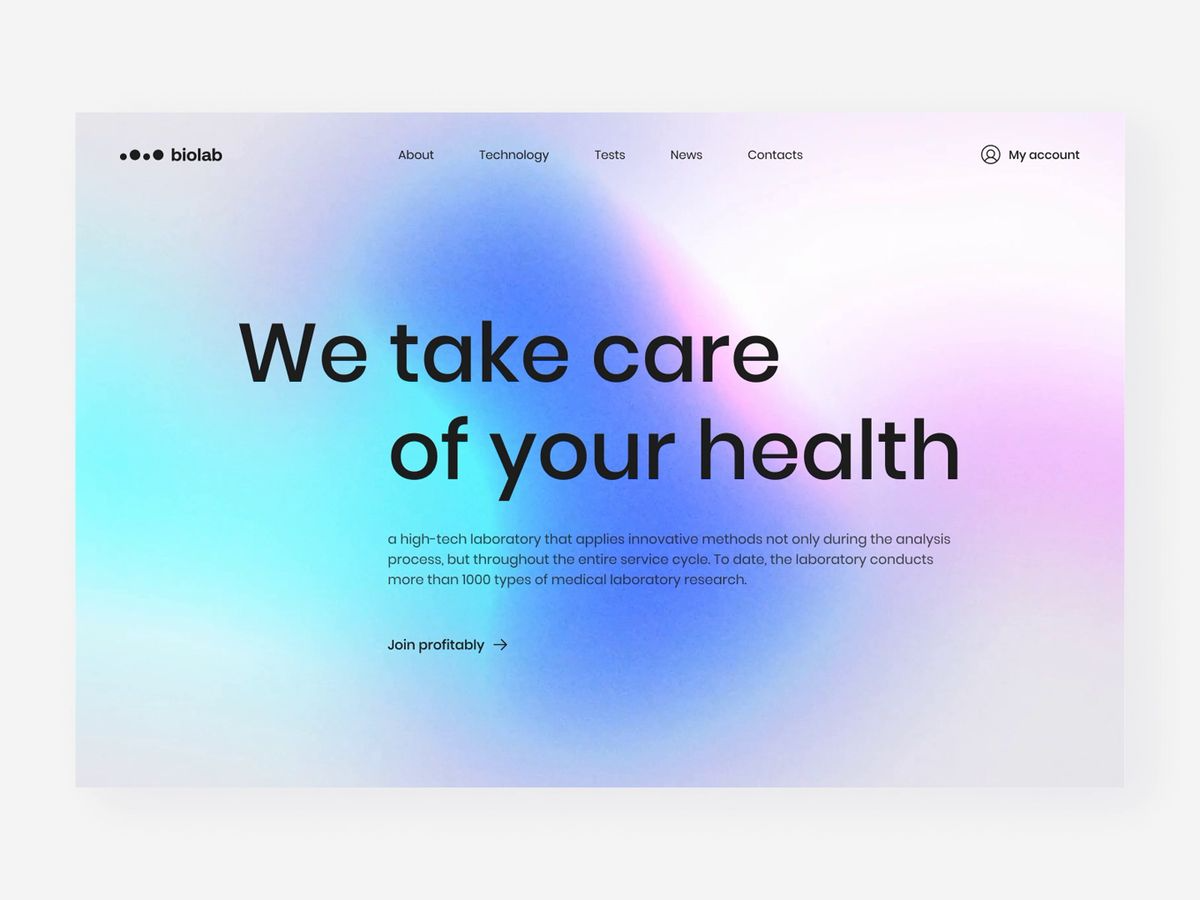
Another swaps imagery for a smooth gradient background, proving that color and typography alone can set the mood and feel modern without visual clutter.
Text-only heroes are especially effective for brands that want to look clear, confident, and contemporary. They show that sometimes the most impactful design decision is simply letting the words do the talking.
14. Data visualization and interactive content
Complex information doesn’t have to feel heavy. More websites are turning data into interactive experiences that invite exploration instead of presenting static charts.
When numbers and patterns move, shift, or respond to your actions, they instantly become easier to understand, and more memorable.
The New York Times has set the standard with its data journalism pieces, where interactive graphics help readers explore complex topics at their own pace. One standout example is “A 3-D View of a Chart That Predicts the Economic Future: The Yield Curve.”
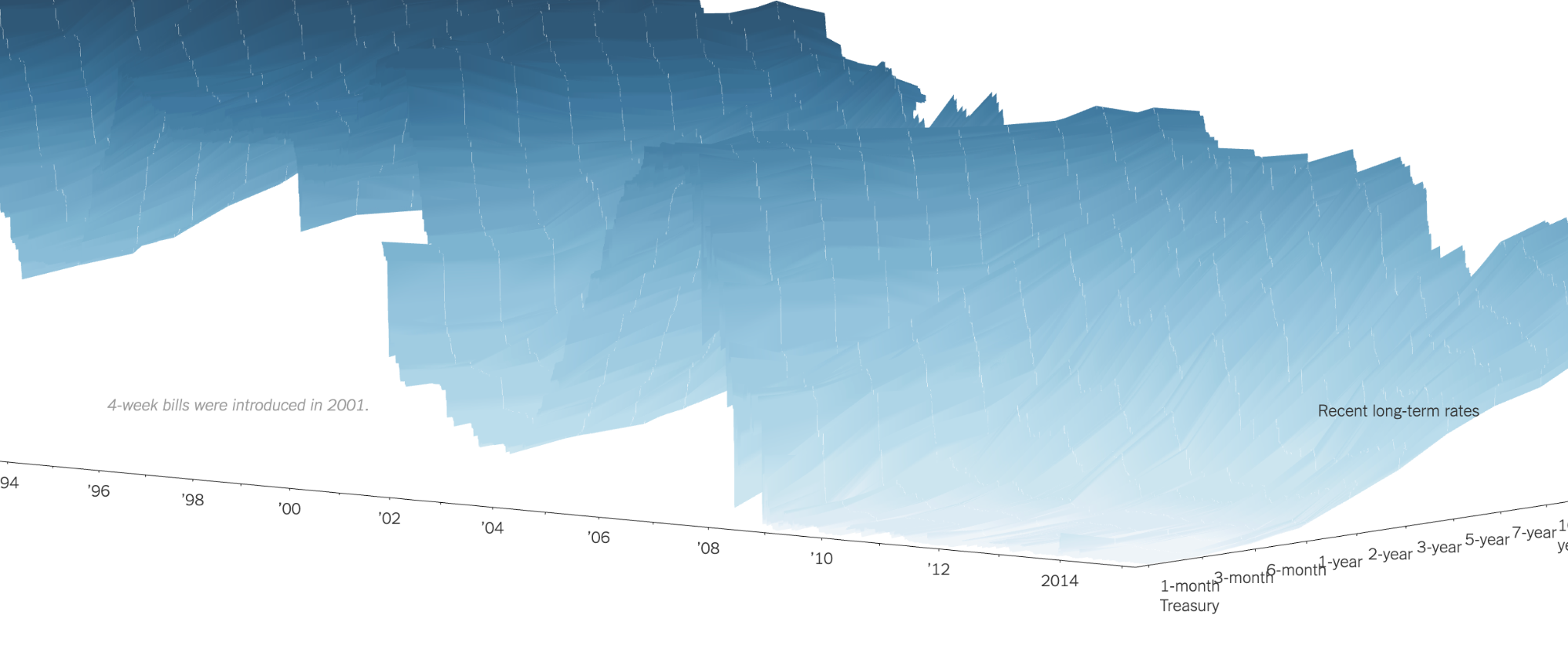
Instead of a flat graph, the team built a rotating 3D surface that maps short- and long-term interest rates over time.
You can shift angles, see how the curve steepens or flattens, and quickly grasp complex economic patterns through motion and depth.
This approach shows how data visualization can move beyond analytics dashboards. Interactive elements like these can explain concepts, spark curiosity, and even become part of a brand’s identity.
It transforms information into an experience—something users engage with, rather than simply observe.
Key takeaways
-
The latest web design trends evolve quickly, shaped by culture, technology, and changing user preferences.
-
In 2025, immersive visuals like 3D effects, subtle animations, and experimental typography are capturing visitors’ attention and boosting user engagement.
-
Responsive web design and streamlined navigation remain essential for creating user-friendly websites that delight visitors across devices.
-
Minimalist design and maximalist approaches can both work. What matters is aligning your website design with your brand identity and audience needs.
-
Custom illustrations, animated illustrations, and organic shapes add depth, visual interest, and authenticity to landing pages and portfolio sites.
-
Micro animations, unexpected floating objects, and interactive content keep site visitors engaged, turning scrolling into a memorable experience.
-
Data visualization and creative design examples show how even complex topics can become visually appealing, positively impact website performance, and capture audiences’ attention.